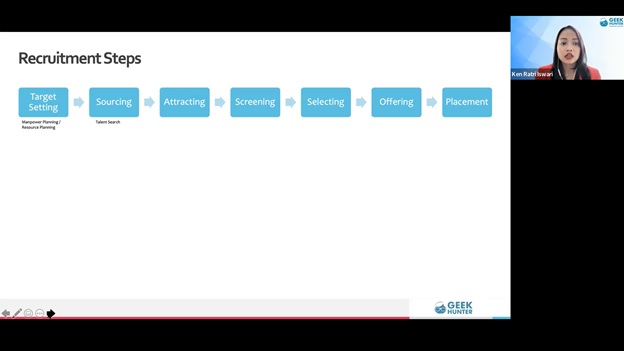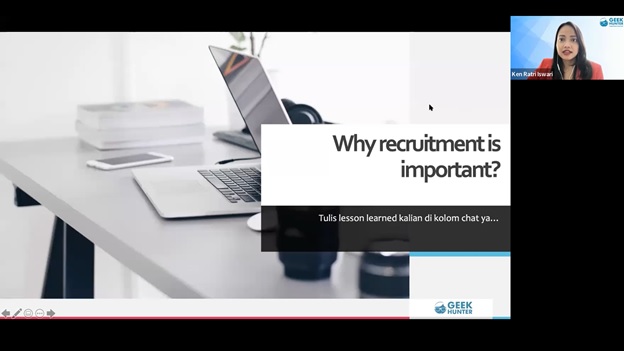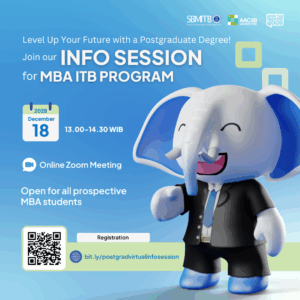No more Superman in today’s business. Superman is dead; instead, the era of super teams has begun. Founders cannot stand alone; there are supporting organs that ensure the company works properly and achieves its objectives. However, how can we find people who can help us achieve our objectives using effective and efficient principles?. To address this question, SBM ITB hosted a guest lecture inviting Ken Ratri Iswari, the Founder & CEO of Geekhunter.
Ken brought the class to life by raising awareness about the importance of recruitment in a business. First and foremost, we cannot do everything on our own. It takes technical and complementary skills to ensure that the business runs smoothly. The second goal is to maintain the company’s comparative advantage or performance quality. Third, this recruitment also screens candidates who will join the company and determine their compatibility with the company at a glance.
“In addition, venture capitalists typically prefer to invest in companies with more than one founder because this is essentially about risk management. If a single founder runs the business, the capital risk is high,” said a member of Startup Bandung’s board of advisors.
Ken also revealed in this class that recruitment is costly, from advertising costs, training costs, and reducing the productivity of other workers, to unanticipated costs, such as incorrect recruitment, theft or embezzlement, etc. As a result, we require a method to make the recruitment process effective and efficient, fitting the company’s needs. The following are the seven steps in the recruitment process:

2. Sourcing, the company actively seeks the talent required under the predetermined target.
3. Attracting, the marketing side of Human Resources, where companies typically deal with active and passive candidates. The Human Resources section exists to shape public perception and create employer branding through the benefits provided to prospective employees.
4. Screening, the company selects the curriculum vitae of incoming candidates. Whereas it usually focuses on the candidates who are in high demand and are on hold. If you still do not receive the existing position filler, the company will look for it from the pending list.
5. Selecting, during the hiring process, companies typically look for three things: skill, attitude, and cultural fit. Interviews are the only way to see and detect this. Interviews can be done through user interviews conducted by prospective superiors, human resource interviews to determine conformity with the company culture, panel interviews, or final interviews conducted with the board of directors.
6. Offering, at this point, the candidate has usually progressed to the final stage. Where prospective employees are given job offers, agreements, and remuneration negotiations, etc. The hiring committee must recheck the background and references.
7. Placement, the final stage of the recruitment process. Employees are given an orientation period and are prepared for work.
Ken, a Mentor at The Greater Hub and the National 1000 Startup Digital Movement, reminded the students at the end of the session. “What is the significance of recruitment?” Because not everyone is a valuable asset to the company, the right person is a valuable asset to the company. As a result, selecting the right people is critical to ensuring that the company receives the best assets to continue its performance,” said Ken.







